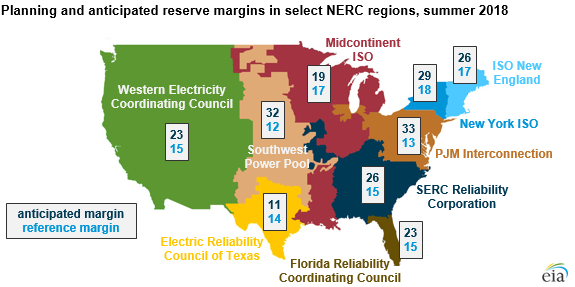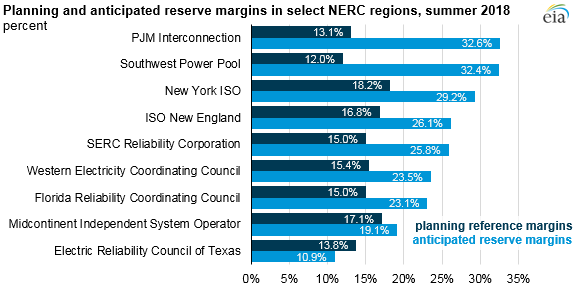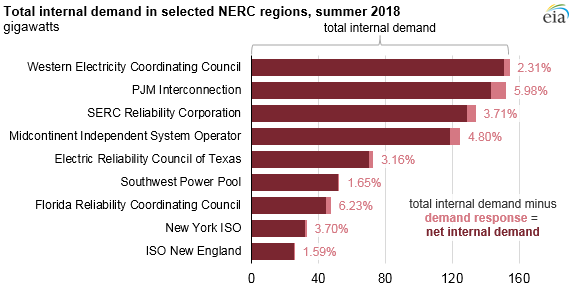The North American Electric Reliability Corporation's (NERC) recent 2018 Summer Reliability Assessment finds that there are enough resources to meet this summer's projected peak electricity demand in in all areas of the country except the Electric Reliability Council of Texas (ERCOT). Anticipated reserve margins—the amount of expected unused electric generating capacity at the time of peak load—range from a little less than 11% in ERCOT to about 33% in PJM Interconnection (PJM).

An important metric of electric reliability is the anticipated reserve margin, measured as anticipated resources (capacity) minus net internal demand, expressed as a percentage of net internal demand. Net internal demand reflects the total internal demand minus demand response systems that are expected to be available during a peak demand hour. A reserve margin of 15% means that about 15% of a region’s electric generating capacity would be available as a buffer to meet the summer’s peak hourly load in case of unforeseen generation or transmission outages.
Planning Reference margins, which differ by region, are reserve margin targets based on each area's load, generation capacity, and transmission characteristics. In some cases, the planning reference margin level is a requirement implemented by states, provinces, independent system operators, or other regulatory bodies. Reliability entities in each region aim to have their anticipated reserve margins surpass their planning reference margins, which are generally set near 15% in most regions.

Anticipated reserve margins are highest in the PJM and Southwest Power Pool (SPP), where reserve margins exceed 32%. Reserve margins that are significantly in excess of target levels, although helpful for reliability, indicate the region may have an excess generation capacity.

In return, customers receive incentives for these reductions. Based on data compiled by NERC, demand response resources range from 6% of total internal demand in areas such as the PJM Interconnection and Florida Reliability Coordinating Council to less than 2% in ISO New England and SPP.
More information about regional summer reliability issues is available in NERC’s 2018 Summer Reliability Assessment.
Principal contributor: Kenneth Dubin

Follow us on social media: